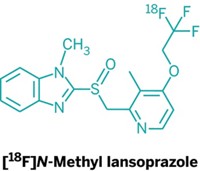Advertisement
Grab your lab coat. Let's get started
Welcome!
Welcome!
Create an account below to get 6 C&EN articles per month, receive newsletters and more - all free.
It seems this is your first time logging in online. Please enter the following information to continue.
As an ACS member you automatically get access to this site. All we need is few more details to create your reading experience.
Not you? Sign in with a different account.
Not you? Sign in with a different account.
ERROR 1
ERROR 1
ERROR 2
ERROR 2
ERROR 2
ERROR 2
ERROR 2
Password and Confirm password must match.
If you have an ACS member number, please enter it here so we can link this account to your membership. (optional)
ERROR 2
ACS values your privacy. By submitting your information, you are gaining access to C&EN and subscribing to our weekly newsletter. We use the information you provide to make your reading experience better, and we will never sell your data to third party members.
Biological Chemistry
Compound Prevents Neurodegeneration
Neurochemistry: Small molecule alleviates Alzheimer’s, Huntington’s symptoms in animals
by Stu Borman
June 6, 2011
| A version of this story appeared in
Volume 89, Issue 23
Researchers have identified and tested a compound that reverses and prevents symptoms of neurodegenerative diseases like Alzheimer’s and Huntington’s in animal models (Cell, DOI: 10.1016/j.cell.2011.05.020; Curr. Biol., DOI: 10.1016/j.cub.2011.04.028). Neurodegeneration, the breakdown or death of neurons, causes losses in one’s ability to think, move, and communicate, often leading to death.
The compound, JM6, offers new hope for treating these diseases, for which new medications are urgently needed. Still, JM6’s safety and efficacy have yet to be confirmed in clinical trials.
The work was carried out by neuropharmacologist Robert Schwarcz of the University of Maryland School of Medicine; neurodegeneration specialist Paul J. Muchowski and his father, synthetic chemist Joseph M. Muchowski, both of Gladstone Institute of Neurological Disease; neurogeneticist Flaviano Giorgini of the University of Leicester, England; and coworkers. The research team hopes to have JM6 in human trials within two years, sponsored by a major drug firm or by a biotech company they are thinking about starting.
In animals, JM6 converts to an inhibitor of kynuren ine 3-monooxygenase, an enzyme that controls the kynurenine pathway, long believed to be implicated in neurodegeneration. This link was established to a large degree by Schwarcz’s group.
Levels of nerve-damaging kynurenine metabolites are elevated, and those of a neuroprotective one are lowered, in the blood of patients with neurodegenerative diseases. The researchers show that administering JM6 to animals with neurodegenerative diseases causes levels of the damaging and protective metabolites to normalize, leading to reversal and prevention of neuron damage.
JM6’s activity “seems like a fairy tale—almost too good to be true,” says Stephen Snyder, a deputy division director at the National Institute on Aging. “But intuitively you want JM6 to work out because it is simple and elegant, it’s good for the brain, and it appears to be nontoxic.”





Join the conversation
Contact the reporter
Submit a Letter to the Editor for publication
Engage with us on Twitter